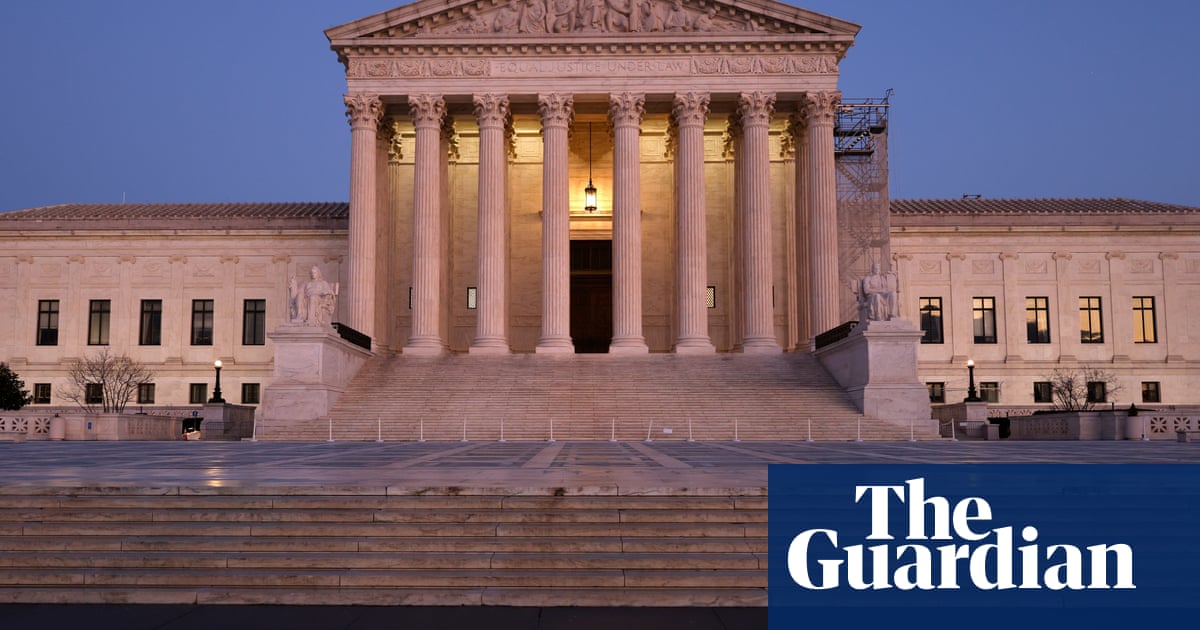The US supreme court is hearing arguments today in a case that could threaten Americans’ access to free preventivehealthcareservices under the Affordable Care Act, commonly known as Obamacare.
At issue is the constitutionality of the US preventive services taskforce, which plays a critical role in determining which preventive services health insurers must cover without cost to patients. The 16-member panel of medical experts, appointed by the health secretary without Senate confirmation, has designated dozens of life-saving screenings and treatments as essential preventive care.
If the justices uphold the lower court’s ruling, health associations said in a filing, life-saving tests and treatments that have been cost-free would become subject to co-pays and deductibles, deterring many Americans from obtaining them.
The case represents the latest in a long series of legal challenges to Barack Obama’s signature healthcare legislation to reach the nation’s highest court since its passage in 2010. A big critic of the program during his first term, Trump and his administration have now taken over the case after the Biden administration initially filed the appeal.
In Monday’s oral arguments, Jonathan Mitchell, the conservative lawyer representing the plaintiffs who previously represented Trump in ballot access litigation, insisted that taskforce members are “principal officers” because “their preventive care coverage mandates are neither directed nor supervised by the Secretary of Health and Human Services.”
Mitchell’s argument hinges on interpreting statutory language requiring the task force to be “independent” and “protected from political pressure”, which he argues is incompatible with secretary oversight: “We don’t see any way that statutory language can be squared with the regime envisioned by the government,” he told the justices.
Several justices appeared skeptical of Mitchell’s reading of the statute, with Justice Elena Kagan questioning whether Congress would create a board without specifying who appoints its members: “I mean, it would be an odd statute. I doubt you could find another where Congress has set up a board and … just not said who should appoint.”
The taskforce is made up of medical experts who serve four-year terms on a volunteer basis. It reviews medical evidence and public feedback and issues recommendations about which preventive services would be most effective for detecting illnesses earlier or addressing ailments before a patient’s condition worsens.
The taskforce has identified dozens of preventive services as having a high or moderate net benefit to patients including screenings to detect diabetes and various types of cancer, statin medications to lower the risk of heart disease and stroke, and interventions to help patients quit smoking or unhealthy alcohol use.
The New Orleans-based fifth US circuit court of appeals ruled in 2024 that the taskforce’s structure violates the constitution, as the plaintiffs claimed. The government’s appeal of the fifth circuit’s decision initially was filed by Biden’s administration before being taken up by Trump.
Trump’s administration argued in a supreme court brief that the taskforce’s preventive care recommendations cannot become legally binding on insurers without the HHS secretary’s permission.
“The secretary can remove them at will, and the threat of removal is the ultimate tool for control over final decisions on recommendations,” justice department lawyers wrote.
For this and other reasons, justice department lawyers argued, the taskforce’s members should be seen as so-called “inferior officers”, meaning they can be lawfully appointed by an executive branch department head – like the HHS secretary – and do not require Senate confirmation under the constitution.
In a supreme court filing, the plaintiffs argued that the Affordable Care Act has transformed the longstanding taskforce from an advisory body into one that now issues “decrees” to insurers, adding that the HHS secretary has no authority to stop taskforce recommendations from becoming binding law.
The taskforce’s lack of supervision, they argued, makes its members “principal officers” who must be presidentially appointed and Senate confirmed under the constitution.
Before the case was narrowed to the appointments issue, the lawsuit included a religious objection to being required to cover pre-exposure prophylaxis for HIV. They claimed that such drugs “facilitate and encourage homosexual behavior, prostitution, sexual promiscuity and intravenous drug use”.
The fifth circuit’s ruling also rejected the government’s request to remove certain offending words from the Obamacare provision at issue – a process called severing – in order to make that part of the law conform to the constitution. That issue was also part of the appeal before the supreme court.
The supreme court’s decision was expected by the end of June.
